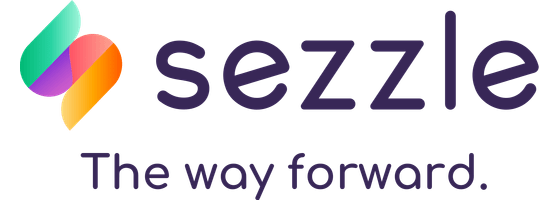- Convenience.
- Competitive rates.
- No collateral.
How to Borrow Money: 9 Best Ways

Our evaluations and opinions are not influenced by our advertising relationships, but we may earn a commission from our partners’ links. This content is created by TIME Stamped, under TIME’s direction and produced in accordance with TIME’s editorial guidelines and overseen by TIME’s editorial staff. Learn more about it.
When you need money for a large purchase but do not have the savings or income to cover the costs, borrowing might be the only option. A 2023 survey by the Federal Reserve found that 37% of U.S. households would not be able to fund a $400 emergency expense using cash. These families will typically resort to borrowing money to pay for such an expense.
We borrow money for all kinds of reasons: to buy a house, finance a home renovation, pay for a vacation, or cover an emergency during a rough patch. Consumers have several ways to borrow money, but the best are convenient and inexpensive compared to other options. The worst ways involve excessive rates and fees, which may put borrowers into a hole from which it may be difficult to emerge.
Personal loans are a reliable way to borrow at favorable terms. Traditional banks, credit unions, online lenders, and digital banks evaluate a customer’s creditworthiness and allow them to borrow a few hundred dollars to $50,000 or more with no collateral.
If approved, borrowers receive a lump sum and repay it as fixed payments over the loan’s duration, which is usually multiple years. Customers often pay an origination fee and a fixed interest rate on the borrowed amount.
Brick-and-mortar banks and credit unions offer walk-in access for your banking needs, but online lenders provide favorable terms and ease of access. Upgrade is a reputable online lender that partners with banks to provide personal loans for credit card refinancing, debt consolidation, home improvement, major purchases, or unexpected expenses.
Credit cards are an easy and fast way to borrow money. Used smartly, they can be inexpensive, and customers can earn valuable cash back or travel rewards. However, credit card interest rates are much higher than other sources, and the lack of guardrails can lead to undisciplined spending and debt troubles.
When you swipe your credit card, you initiate a short-term loan between you and the provider based on preset terms. No interest is charged if you pay the full balance each month. Credit card companies charge interest on balances that carry over month to month.
Qualified card applicants may qualify for 0% introductory rates for balance transfers. These rates can help borrowers alleviate interest costs temporarily—usually for six to 18 months—but the interest will eventually accrue.
Cash advances on credit cards are also available but offer less favorable rates and more fees than credit card purchases. For example, the Citi Double Cash® Card provides a cash advance APR of cash_advance_apr plus cash_advance_fee. There’s a $10 minimum. The Citi Double Cash Card® has a balance_transfer_rate, followed by reg_apr,reg_apr_type on purchases.
Unplanned expenses can arise at any time. If you don’t have an emergency fund, you may need a quick financial solution. Some lenders specialize in providing fast access to personal loans for instant cash needs. Similarly, mobile technology has spawned a new breed of cash advance apps that provide near-instant cash between paychecks. These two ways of accessing funds quickly have pros and cons you should carefully consider before taking either route.
Instant cash loans are personal loans that are approved and funded quickly. Applicants provide personal information to determine eligibility. Once approved, funds can be sent to a bank account as soon as the next business day, though it can sometimes take a week or more.
Loan amounts, interest rates, and payoff periods vary by lender, so shopping around is essential. APRs typically range from 6% to 36% or higher. For amounts over $1,000, quick money loans are a better option than cash advances.
PersonalLoans | Upgrade | Credible | Earnin | |
|---|---|---|---|---|
| APR | 5.99% to 35.89% | 9.99% to 35.99% | 6.94% APR - 35.99% APR | N/A |
| Loan amount | $250 to $35,000 | $1,000 to $50,000 | $1,000 to $200,000 | $150/day, with a max of $750 between paydays |
| Term | 3 to 72 months | 24 to 84 months | 12 to 120 months | After your next |
| Min. credit score | None | 580 | Undisclosed | None |
Cash advances are a different type of instant cash loan. Unlike traditional loans, they don't have an interest rate. Instead, cash advance apps use your income history and employment status to decide if they will front you money before your next paycheck. Cash advances can bridge the gap between paychecks, sometimes at no cost if the user can wait a few days. However, instant cash disbursements have additional fees and low daily and per-pay period maximums.
When the next paycheck arrives, the apps automatically debit the repayment amount—plus any fees or tips—from the connected bank account, providing a convenient and less costly experience compared to other high-interest debts. Though convenient, customers should use cash advance apps infrequently to avoid becoming dependent upon them.
Homeowners with significant home equity can choose home equity loans to borrow money with favorable terms. Also known as second mortgages, these loans allow homeowners to borrow against their homes at lower rates than personal loans or credit cards. Home equity loans typically provide a lump sum amount that the borrower pays back with fixed payments over a specific duration (five to 30 years). Borrowers can use the money for just about anything, including remodeling costs, pool loans, vacation money, or down payments on other properties.
Since the property secures home equity loans, lenders can provide more favorable rates that approach mortgage rates. However, using a home as collateral puts the house at risk if the loan becomes delinquent.
Like home equity loans, a home equity line of credit (HELOC) gives homeowners a way to borrow money by tapping the value of their home. HELOCs provide a more flexible option to borrow funds when needed, versus home equity loans, which offer fixed terms.
Upon initiation, the borrower and lender agree to the HELOC terms, including duration, interest rate, and how outstanding debt is handled at the end of the term. Once established, the consumer can borrow as needed, paying back the borrowed amount monthly as calculated by the terms.
Begin exploring home equity options with your mortgage provider, but shop around for the best rates.
Buy now, pay later loans help consumers spread the payments on purchases over multiple months. This service helps shoppers lower monthly bills when cash flow is tight. Services like Affirm and Klarna partner with retailers to provide this service, and credit card companies offer similar services (for example, Chase Pay Over Time, American Express Plan It) for qualified accounts.
Interest or flat fees depend on creditworthiness but are often lower than traditional credit card interest. Some services offer zero fees and 0% interest to entice new customers with “pay in 4” plans in which you make a total of four equal payments every two weeks.
Many consumers prefer the buy now, pay later options because pricing is straightforward. Instead of carrying a credit card balance that accrues monthly interest, buy now, pay later payments and fees are disclosed at the start. Chase Pay Over Time charges a fixed monthly fee. However, a flat fee can make it difficult to compare the costs against traditional credit card interest. You can convert the flat fee to an annual interest rate for an apples-to-apples comparison.
However, having too many active buy-now-pay-later purchases could lead to a high monthly debt service cost and can be a slippery slope.
Intermediate to expert investors with significant balances in their non-retirement accounts may have opportunities to borrow against their investments for cash needs. Margin loans are commonly used to leverage a stock portfolio to buy more tradable assets. Investment account holders can also use the money for other purposes, like home renovations or vacations.
There are significant considerations before taking on margin loans. Borrowing on margin has limitations based on the assets in the account. For example, a $100,000 account may only allow up to $50,000 of margin borrowing. More concerning, if the account value decreases due to market fluctuations, borrowers would receive a margin call requiring them to add funds to the account immediately to satisfy the margin limits or be forced to sell investments.
If an investor borrows, say, $50,000 on a $100,000 account, and the account value falls to $90,000 due to market volatility, they would receive a margin call for $5,000. The key to using margin loans conservatively is to borrow far below the maximum. In the above example, a $10,000 loan could cover a significant emergency expense without putting the account holder at risk for margin calls.
M1 Finance makes borrowing on margin simple with a variable interest rate currently at 7.25% for M1 Plus account holders. We don’t recommend borrowing against holdings to buy more stocks, but it can be an affordable way to extract funds from existing assets without selling them.
Borrowing from friends and family can be a good option if you are careful not to let it affect your relationships. The Bank of Mom and Dad can be a way to borrow with favorable terms like 0% interest rates and flexible payback terms. However, it may also come with relationship baggage, unspoken expectations, and other nonfinancial stipulations.
If you solicit borrowed money from family, treat it as if you're borrowing from an actual bank. Respect the agreement and aim to clarify any questions before initiating the loan. Recognize that if you don't hold up your end of the deal, the next holiday could be uncomfortable.
Family lenders should clearly articulate loan and repayment terms in writing to clarify expectations. Be firm about the terms and highlight the consequences of delinquency. Avoid attaching unspoken expectations to the loan. Stay mindful of how it may impact your relationships and avoid lending money altogether if you’re concerned it will negatively affect your family.
The purpose of a 401(k) or other workplace savings vehicle is to put away money for retirement. 401(k)s are not designed for lending but many employers offer this as an option. If you've exhausted other options, a 401(k) loan may be better than a hardship withdrawal.
Borrowing against a 401(k) balance may be a good idea. Depending on the employer, the account holder can tap into the existing balance up to 50%. The borrower then pays back the loan over a maximum of five years. The interest paid goes back into the retirement account, so you are effectively paying yourself interest. But you will miss out on potential market gains on the borrowed amount while the loan is active.
If you leave your employer owing a 401(k) loan balance, you generally have to repay the entire borrowed amount upon exit. And though defaults are not reported to credit bureaus, they are treated as early withdrawals, subject to taxes and a 10% penalty if you’re under age 59½.
Borrowers with bad credit can find suitable loan products for their needs but should expect to pay more to borrow. They may only have access to smaller and shorter-term loans until they can improve their credit.
Personal loans for those with bad credit do exist. Expect higher interest rates and shorter loan terms.
Several reliable vendors offer quick money in case for emergencies. You can also have access to up to $500 in cash advance from apps without a credit check, paying interest or mandatory fees.
People with bad credit can still get credit cards but will pay more in interest if they fail to pay the balance in full. Look for 0% introductory rates if you qualify, and only charge what you can afford to pay back each month on the credit card. Develop the discipline to reduce credit card usage and pay the balance on time to improve your credit score.
Buy now, pay later loans may offer favorable terms for people with bad credit. Start with small purchases, and pay on time to demonstrate your reliability as a borrower so you improve your credit score.
If your credit is so bad that you need a cosigner to borrow, finding a willing partner may be difficult. Trusted family members may find it wiser to avoid cosigning. However, if you’re down on your luck and a reliable friend or family member has enough trust in you to repay the money on time, a cosigner may be an option. If you fall behind or default, you’ll hurt your family member’s credit alongside yours.
Payday loans are the worst way to borrow money. Avoid these predatory lenders under any circumstances. Short-term in nature, the interest and fees charged for these loans may not seem like a lot. On an annualized basis, you may pay close to 400% interest, compared to average credit card rates of about 23%. Payday loans are not available in 13 states and Washington, D.C.
Title loans for cars or other vehicles are as bad as payday loans. These short-term loans require the vehicle owner to hand over the title as collateral. Title loan companies charge a 25% fee on the amount borrowed and require that it be paid back in 15 to 30 days. Annualized, these loans cost the borrower up to 300% APR.
Worse, being granted an extension will add additional fees if not paid on time. If this carries on long enough, the title loan company will eventually sell the vehicle to get its money back, and the borrower will lose the vehicle. The Consumer Financial Protection Bureau (CFPB) found that one in five car title loan borrowers loses their vehicle. Title loans are not available in eight states.
Large credit facilities may tempt you to borrow more money than you need for an unplanned expense. Too much debt can be a dangerous financial trap, regardless of wealth. Maintain discipline where there’s an opportunity to borrow more than you need.
Avoid borrowing frivolously. Before borrowing, set guardrails for yourself using the loan-to-value ratio on your house or debt-to-income for your personal finances. Calculate debt-to-income by taking your monthly debt payments and dividing by your pretax monthly income. Aim to keep the ratio below 35%, the threshold many banks consider to be in a safe range. Above 35%, you may feel pressure from monthly payments taking up too much of your income.
Missed payment obligations are a sign that you’ve borrowed too much. Worse, they tell the credit facilitator that the risk of default has increased, and they may raise your interest rates or charge a penalty, making payments even more difficult to cover.
Each time you add a new debt, consider the payment consequences before you move forward. Keep a healthy emergency fund to cover unplanned expenses so you can handle any bumps in the road.
Many of us will encounter a time when we need to borrow money. Some methods for borrowing money are better than others, so do your research before committing to any of them. The key to smart personal finance is to only borrow what you need and repay the loans on the agreed-upon schedule. Shop for the lowest possible rates, and be careful not to exceed a 35% debt-to-income ratio to keep a safe buffer between your income and debt payments.
Determine how much you can borrow using the debt-to-income ratio. This figure is used to assess your ability to pay a debt and to stay current with payments.To estimate yours, add up all your monthly debt payments and divide them by your gross monthly income. A lower DTI makes it easier to qualify for a loan.
Credit card cash advances are the fastest way to borrow money without encountering a predatory lender. Cash advances will do the job quickly, but you’ll pay a high interest rate, and they are generally not recommended.
Another option is the Dave ExtraCash account. Dave provides short-term cash advances of up to $500 when you need it with no credit check or late fees. Download the Dave app and link your bank account. Then, Dave determines how much it can advance, and you agree to a settlement date. You’ll need to pay it off by your next payday or the nearest Friday when you took the advance if Dave cannot determine your payday. Note that you’re encouraged to set up a Dave Spending account to handle transactions, and fees are charged, especially for faster transfers. Dave has a B+ rating from the Better Business Bureau and a 1.15/5 Customer Reviews rating.
401(k) loans may be the best way to borrow against your own money because the interest paid goes back into your retirement account. Disciplined savers can borrow against their emergency savings in times of need, but this may deplete the balance and defeat its purpose of saving for the future.
Home equity, HELOCs, and margin loans are additional ways to borrow against your own money, but you pay the interest to the loan facilitator.
Home equity loans can help homeowners borrow the most money if the home has significant equity—at least 15% to 20%. Otherwise, banks will issue personal loans of $50,000 or more if a borrower has excellent credit.
The information related to Citi Double Cash® Card has been collected by TIME Stamped and has not been reviewed or provided by the issuer or provider of this product or service.
The information presented here is created by TIME Stamped and overseen by TIME editorial staff. To learn more, see our About Us page.





